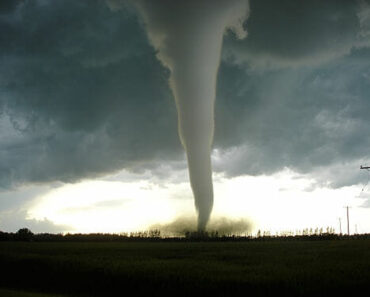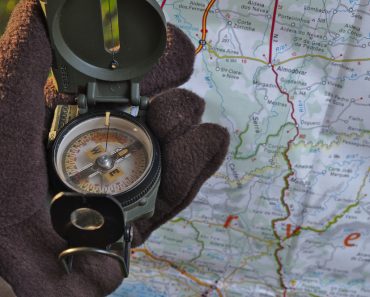Extreme weather is no joking matter. While you may be used to some natural disasters in your hometown, others could still pose a threat you haven’t yet encountered.
Consider these life-saving tips when you’re preparing to survive the next natural disaster that rolls through.
Tornadoes
Tornadoes strike when conditions are windy enough, and they can be devastating. The only way for a tornado to stop is for it to burn itself out. Since there isn’t a way to fight a tornado, you should be on your guard and prepare for the upcoming terrible weather in your own way.
1. Get to Lower Ground
You should know that the safest place to be during a tornado is on the ground floor of the building you reside in. However, things can get complicated if you don’t have a basement or live in an apartment complex.
If you can hide out in a parking deck or a hallway, you’ll be better off than staying where you were. If you absolutely can’t get somewhere lower, remember to cover your head and protect your body with something sturdy to prevent damage to your person.
2. Make a Plan for Everyone
Create an emergency plan for your household. The bigger your home is, the more desperately you need a plan to gather everyone in one place. Even if you haven’t experienced a disaster within the last year, you should test your plan annually to ensure everyone knows what to do in the event of a tornado.
Folks with special needs, such as those who have mobility aids or even pets, may need plans tailored to them. They may not be able to evacuate or get to the same level as everyone else, and you should create individualized plans for them. Having a plan of their own will help them feel less anxious during an emergency.
3. Keep a Safe Box of Essentials
You’ll want a sturdy box full of essentials to keep safe with you in the event of a tornado. This box should include a first-aid kit, non-perishable foods, and more. Make sure you gather all of your important contacts, such as neighbors or faraway relatives you’ll want to check in with, in one place where you can easily access them after the storm passes.
Hurricanes
Hurricanes are dangerous natural disasters that typically strike the coast but can also strike many miles inland. They require extensive preparation, as there’s much to worry about both during and after a storm. In addition, they can constantly evolve, so hurricanes typically don’t stay at the same danger level as the day before.
1. Take Shelter Immediately
Hurricanes bring strong winds and rain with them. Plenty of people board up their windows in case the glass shatters. You can expect the hurricane to hit your house hard, so take any precautions you need to. Prepare your home for the storm ahead of time, and you’ll be fit to shelter in place or evacuate without worrying about your most important assets.
2. Always Evacuate When Needed
Depending on the category of the storm, you may have to leave your home. Keeping your television tuned to the news can help you understand the best time to go or whether you should leave at all. If you plan to leave, remember to take your pets with you. They’re an irreplaceable part of your family. Just keep an eye on the weather, and you can decide what steps to take from there.
3. Stay Out of the Water
Several diseases or pollutants could contaminate the water left over by hurricanes. You might accidentally swallow something you didn’t mean to. The best way to ensure you stay away from the water is to have an emergency flotation device just in case and prepare for the absolute worst before the storm arrives.
Floods
Floods may seem tame compared to other extreme weather conditions, but it’s one of the most difficult to adjust to. When water surrounds you, you’re stuck in place and can do nothing but wait for it to recede. You might get cabin fever, but as long as you prepare to stay inside for a few days, you should feel ready to brave the storm.
1. Watch the Water Levels
Just as you would watch the news for any extreme weather in your area, you should watch out your windows and keep an eye on the rising water level. If you’ve been through floods before, you should know how much you can handle.
It’s unlikely you’ll need anything after preparing for the flood, but if the water levels are still low and you think you can safely drive in it, you may still be able to make a final trip to the store.
2. Get to High Ground
If you can find shelter on higher ground, move as soon as you can. Take your valuables and evacuate your home, particularly if it sits low before the water gets too high. Only time will tell how long it’ll take for floodwaters to recede, so plan to be away from your home for a while.
If you don’t feel the need to evacuate your home right now, keep your radio tuned to public news stations to see if evacuation orders end up being issued – and have a place in mind to go if that order comes.
3. Only Drink Boiled Water
Because a flood can cause water pipe breakage, you should rely on bottled water to hydrate your household during and shortly after a flood. If you must use water from the tap, boil it first to eliminate any contaminants that may have entered. Even if you don’t plan to drink the water, make sure it’s boiled before it touches you or any other living thing.
Blizzards
Blizzards are known for the intense snowstorms that sometimes roll through in the winter, taking electricity with them as they fizzle out. Even if the blizzard you’re faced with isn’t powerful, you should prepare for the power to go out.
Also, properly winterize your car before the blizzard comes by outfitting it with new tires and getting it checked, just in case you need to brave the aftermath of the storm.
1. Gather Candles
In addition to other emergency supplies, you’ll need candles. Proper candles and matches can keep you warm if you don’t have another option. Candles might not be as powerful as a fireplace, but they can give off enough warmth in a small area to supplement the blankets and clothing layers you’re using. Remember to watch the flames carefully, and don’t let children and pets near them.
2. Designate One Room to Live In
After a blizzard, you may find that your power is out for days. Before the storm arrives, designate one room in your living space to be the spot where everyone lives for the next few days. Your whole household spending time in one room will draw warmth to that area. This way, you only need to focus on stocking one room full of blankets and candles, and you can seal off the rest of your home.
3. Equip Yourself Properly
You likely won’t leave your house during a blizzard, but after the storm settles and it leaves snow behind, that’s another story.
Shoveling sidewalks and driveways so you can go somewhere might be an excellent idea, but make sure you do it carefully and wear the proper winter clothing. Also, whenever you choose to leave your house, carry salt or sand to throw on the ground, so you don’t slip on ice.
Dust Storms
The southwestern United States already knows of the dangers of dust storms, but they can happen anywhere in the country, so it’s worth it to be prepared. The remnants of thunderstorms or small tornadoes can create dust storms, especially in dry areas. When soil and dirt get scooped into the air and thrown around, your best bet is to stay indoors and preserve your health.
1. Stay Indoors
The most crucial piece of advice you’ll receive when facing a dust storm is to stay inside. Inhaling dust can be detrimental to your health, especially in large quantities. Before the dust storm arrives, prepare everything you need to be inside.
If you have a dog who needs frequent walks, try to limit your time outdoors. It could be worth it to train your dog to use a puppy pad – similar to how a cat uses a litter box – so you can clean up after them without having to expose yourself or your pup to the dangers of a dust storm.
2. Have Facial Coverings Ready
In dust storms, you’ll find dust everywhere. You may have to venture outside the protection of your home, so it pays off to have facial coverings ready. Goggles can protect your eyes from the grit flying around, while a face mask can prevent the dust from getting into your nostrils or mouth. This way, you can avoid dust entering your lungs and remain safe. Try to limit trips outside until the dust storm has passed.
3. Be Careful When Driving
Dust storms can create sudden issues with visibility. Before the storm approaches, go out to the store and gather everything you need, so you don’t get caught in all the dust.
Don’t get in your car if it’s exceptionally windy in your area. A storm can change in an instant, so if you’re caught in a dense part of the storm while driving, pull off to the side of the road and wait it out. It’s better to be safe than sorry.
Stay Safe and Prep Your Home
Reaching out to others is one of the best things you can do in a dire situation. You never know when someone else needs help, and they could return the favor and help you when you need it most.
Though every natural disaster or extreme weather event has its preferred season and location, you still want to prepare and know what to do in any situation. Taking responsibility and having a plan for every type of weather is the best way to show your skills as a survivalist.
And maybe take this SEAL test! You will learn a lot from it!




























